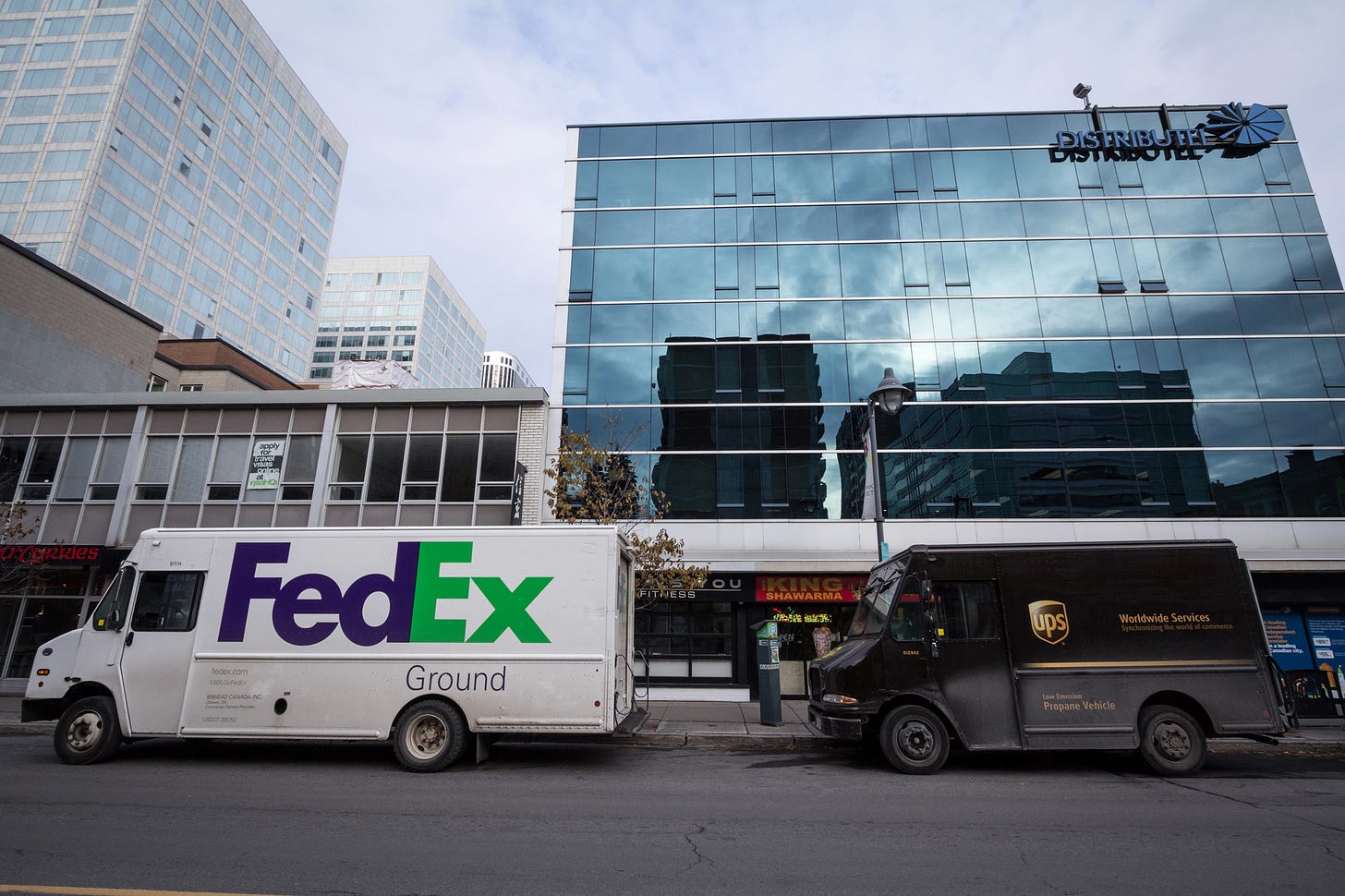Parcel Dynamic Pricing – Peak Season
FedEx has been dabbling with dynamic pricing since it launched its Network 2.0 strategy in 2022 during its investor conference. "I think from a dynamic pricing perspective, the industry is in the first innings…I am confident we're ahead from an industry perspective, but I think it's a win-win, quite frankly, for the whole industry, FedEx Chief Customer Officer Brie Carere said.
Indeed, the use of dynamic pricing in the parcel market is helping FedEx and UPS to protect their revenue per package as volumes, in general, slip. However, for the peak season, it’s forcing shippers to be as accurate as possible to forecast shipments to share with FedEx and UPS. These forecasts are, in turn, used by FedEx and UPS to manage their costs and to determine capacity requirements.
Beyond peak season, UPS executives discussed during UPS' investor and analyst virtual conference in 2021 their Next Generation Profit initiative, a cross-functional program that, among other things, allows UPS to "optimize pricing for each customer and better align our cost to serve with the value we create." During the discussion, UPS CFO Brian Newman said, "We are continuing to evolve the platform to leverage technology that will adjust pricing in a more dynamic manner to maximize overall profit in real-time."
Dynamic pricing is likely being used in a number of other ways beyond peak season including online platforms created by FedEx and UPS for shippers such as small-to-medium-sized businesses to manage domestic and international shipments on their own.
The ability to utilize dynamic pricing comes from the data that FedEx and UPS gather on each parcel to ‘feed’ their AI algorithms and machine learning to analyze and change pricing and/or service levels, capacity, optimize routes, and more.
Dynamic Pricing and Peak Season
During FedEx’s investor meeting in 2022, Carere announced that a "more granular peak surcharge" would be rolled out in August of 2022 "to manage customers in an automated way if they [customers] are not hitting the requirements that they are giving us."
According to Carere, the pricing strategy would be fine-tuned every ten weeks to include such changes as day-of-week pricing and "more customized in certain hotspots or constraint areas" within FedEx's network. As a result, "…we reduce some waste, we improve our margins, they [customers] reduce their costs," Carere said during the conference.
Since 2022, FedEx has been expanding and tweaking its dynamic pricing capabilities further, particularly for peak season when costs and volumes run higher for the carrier.
This week, FedEx updated its demand surcharges for the upcoming peak season, noting on its website – “As FedEx prepares for high demand during the holiday season, we are implementing certain demand surcharges and fees to continue providing our customers with the best possible service.”
FedEx’s announcement further noted – “During times of elevated volumes, high demand for capacity, and increased operating costs across our network, FedEx will implement demand surcharges. Demand surcharges are determined for each market based on regular assessments of shipment volume and capacity within our network to accommodate. FedEx reserves the right to reassess and/or reinstate the demand surcharge at its sole discretion.”
The impacted surcharge for this year’s peak season is the demand charge on residential deliveries (Keep in mind, though, that the demand charges on surcharges such as residential deliveries, additional handling, etc., are on top of the existing surcharges). The demand charge on residential deliveries will be adjusted dynamically each week using FedEx’s peaking factor methodology, which is a bit convoluted, in my opinion – For more on FedEx’s peaking factor, please see FedEx’s website.
Managing Costs as Shippers Diversify Parcel Carriers and Providers
In terms of shippers’ costs, those shippers that have diversified their parcel volumes among various carriers and providers will likely not be impacted as much as those that solely rely on FedEx and UPS.
However, it’s a catch-22 for FedEx and UPS as they rack up costs as they reconfigure their networks to match lower volumes. But at the same time, they are utilizing dynamic pricing more and more to keep their revenue per package from slipping and to help manage capacity needs more efficiently.
- Cathy
For more thoughts and shares, be sure to follow me on Twitter, BlueSky and LinkedIn.
I wear a number of hats these days. I’m also helping out the Reverse Logistics Association as a research manager, and at JOC, I help out as a research analyst and write a weekly LinkedIn newsletter, Freight Forward, summarizing JOC & other published articles and providing an outlook for the week ahead. In addition, be sure to check out my website and be sure to sign up to receive more blog posts.




